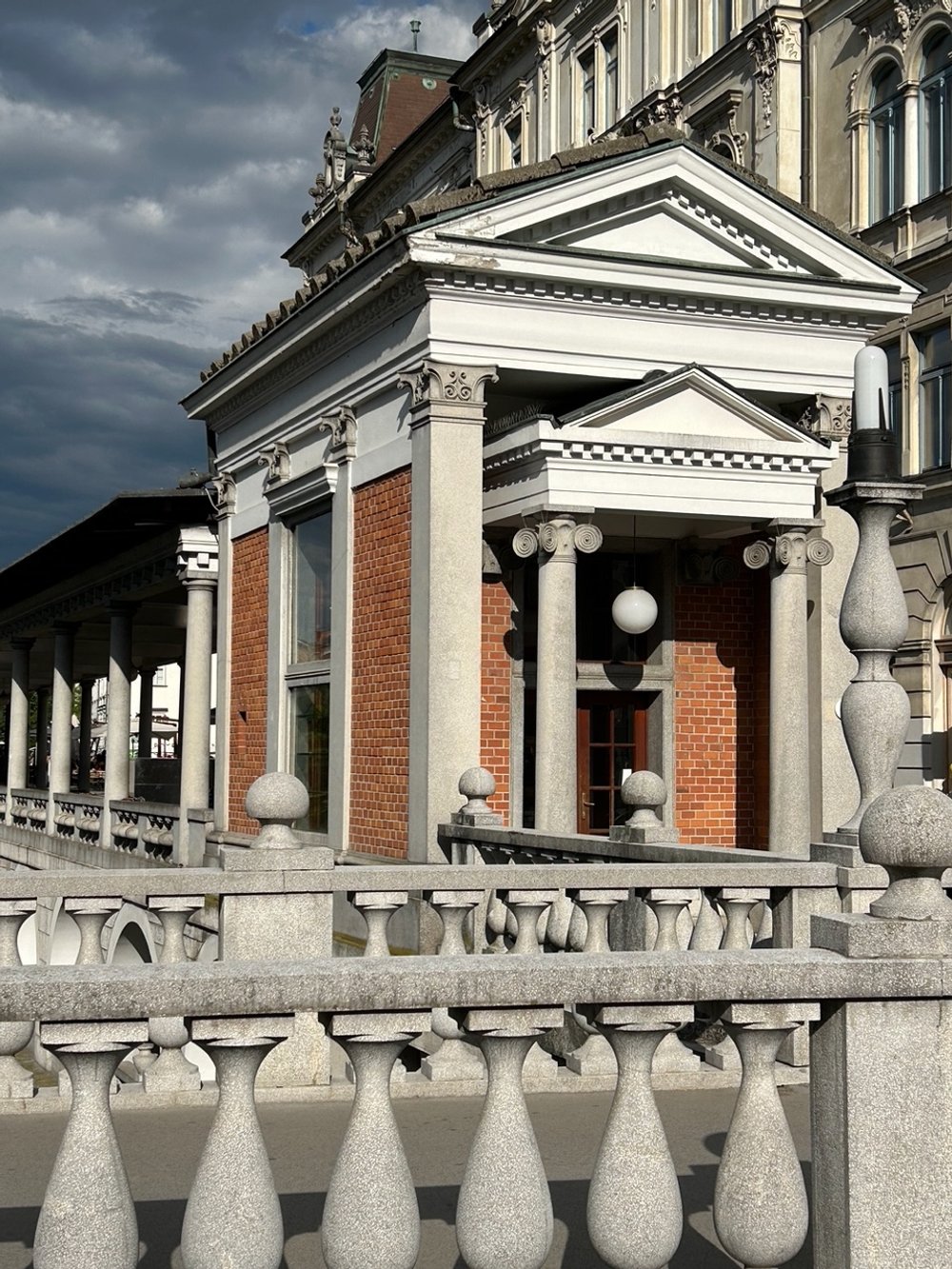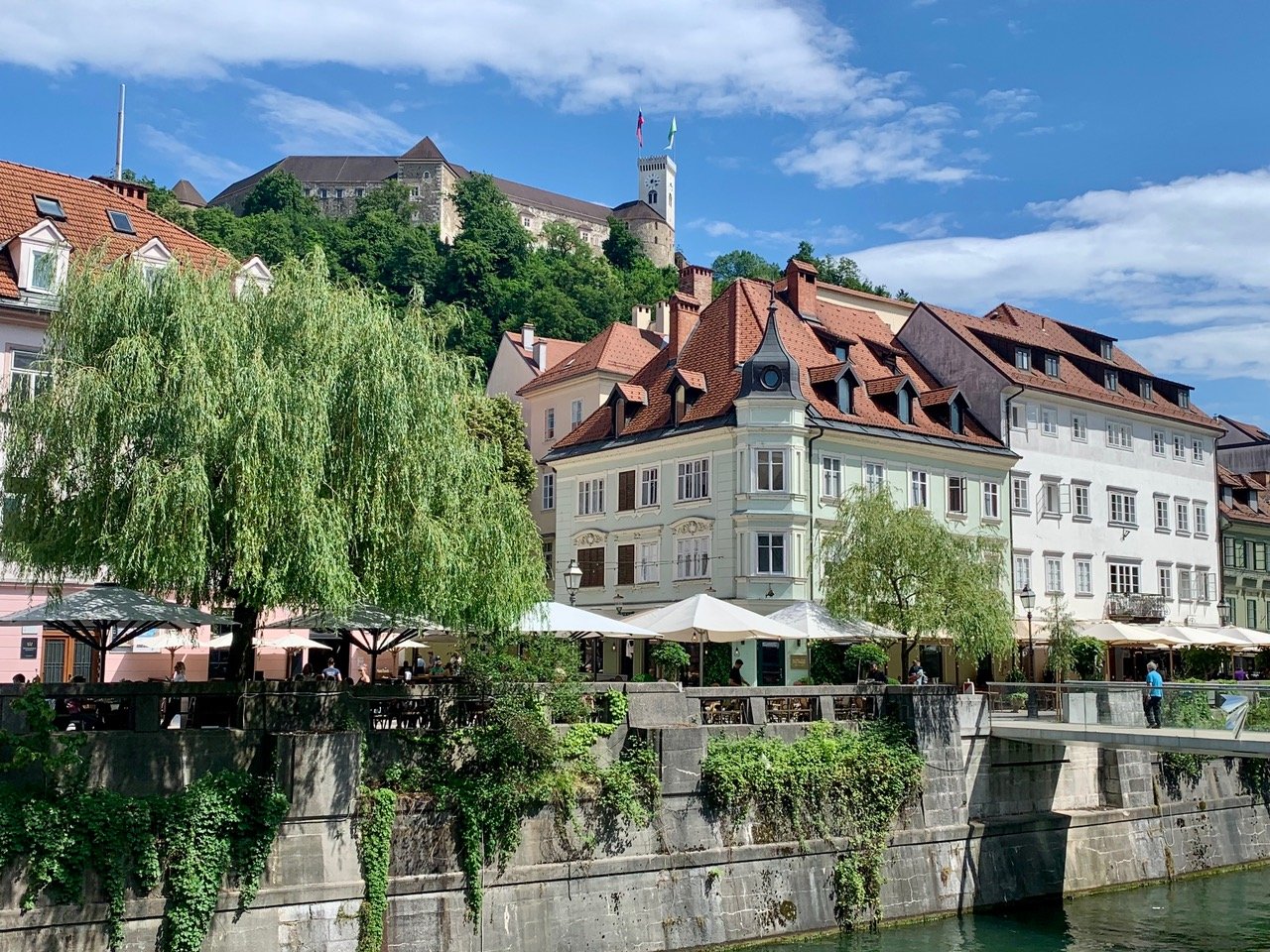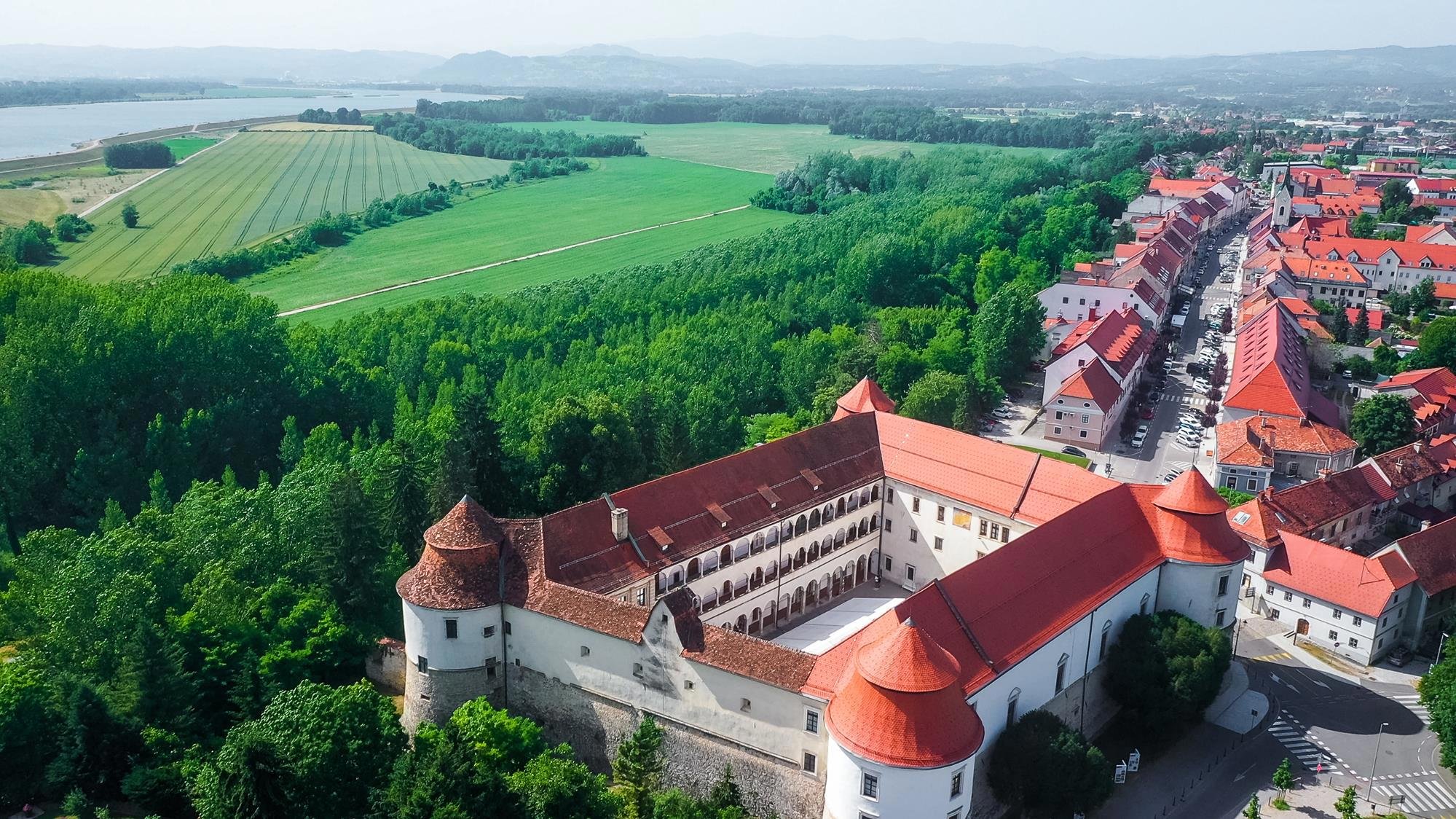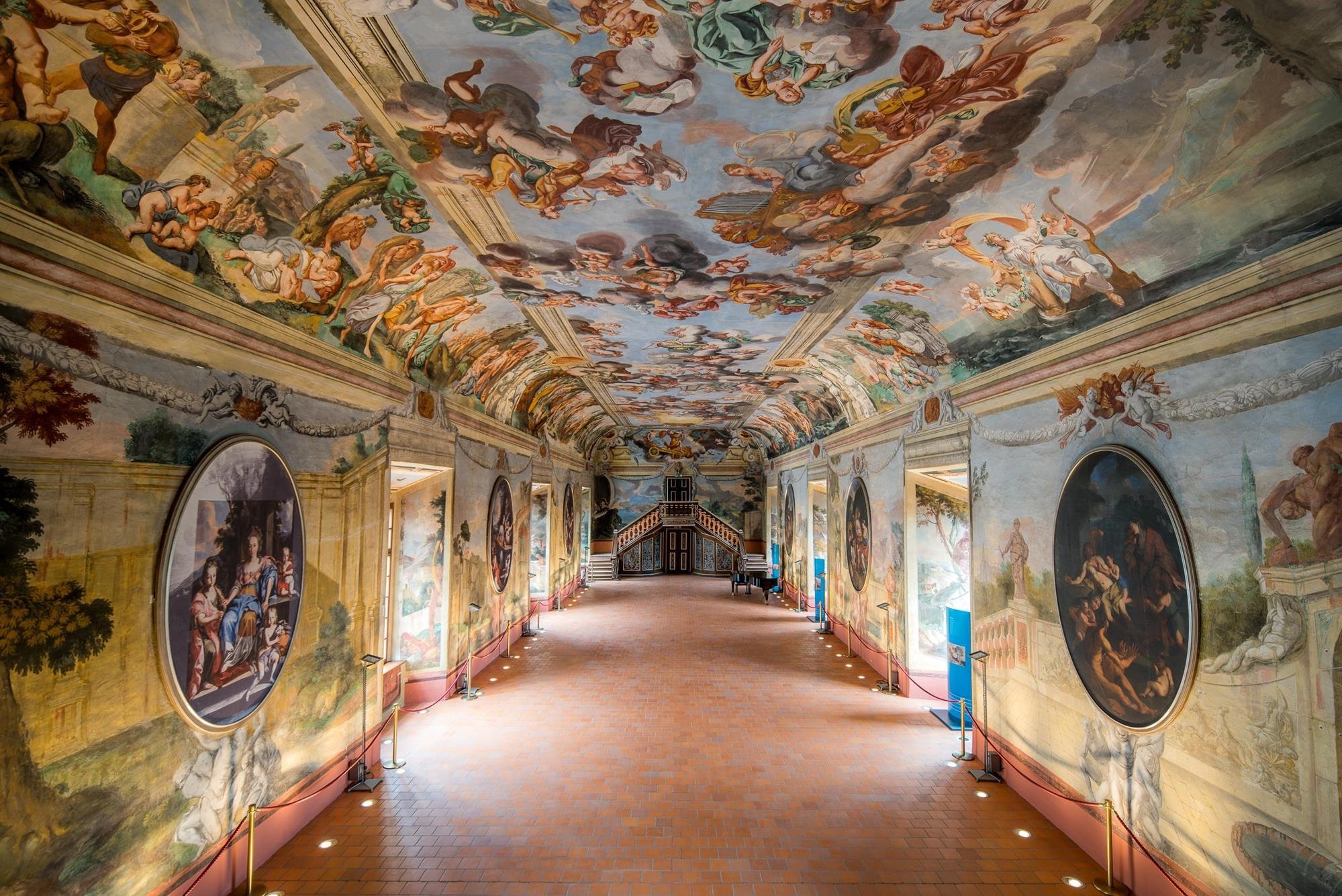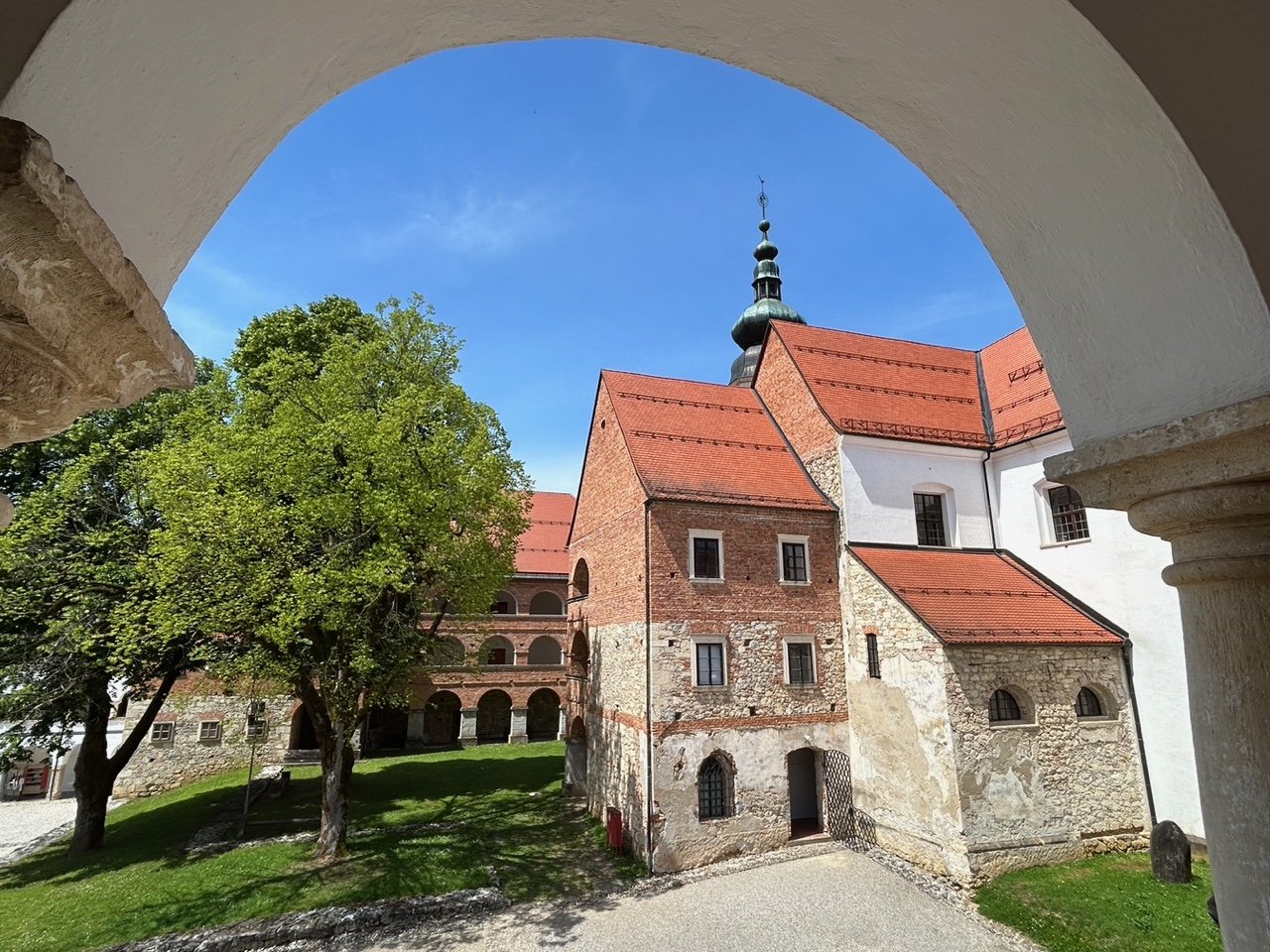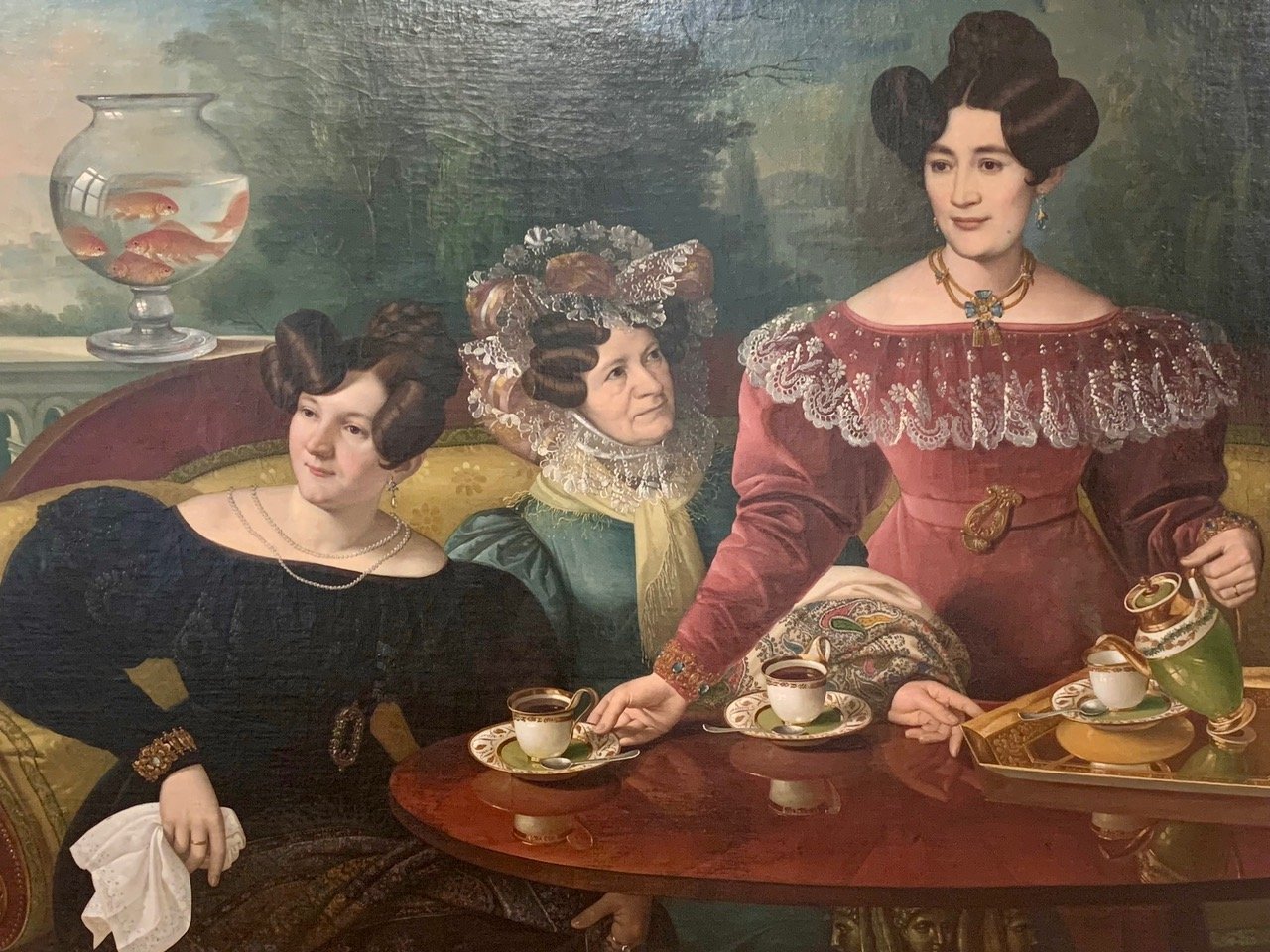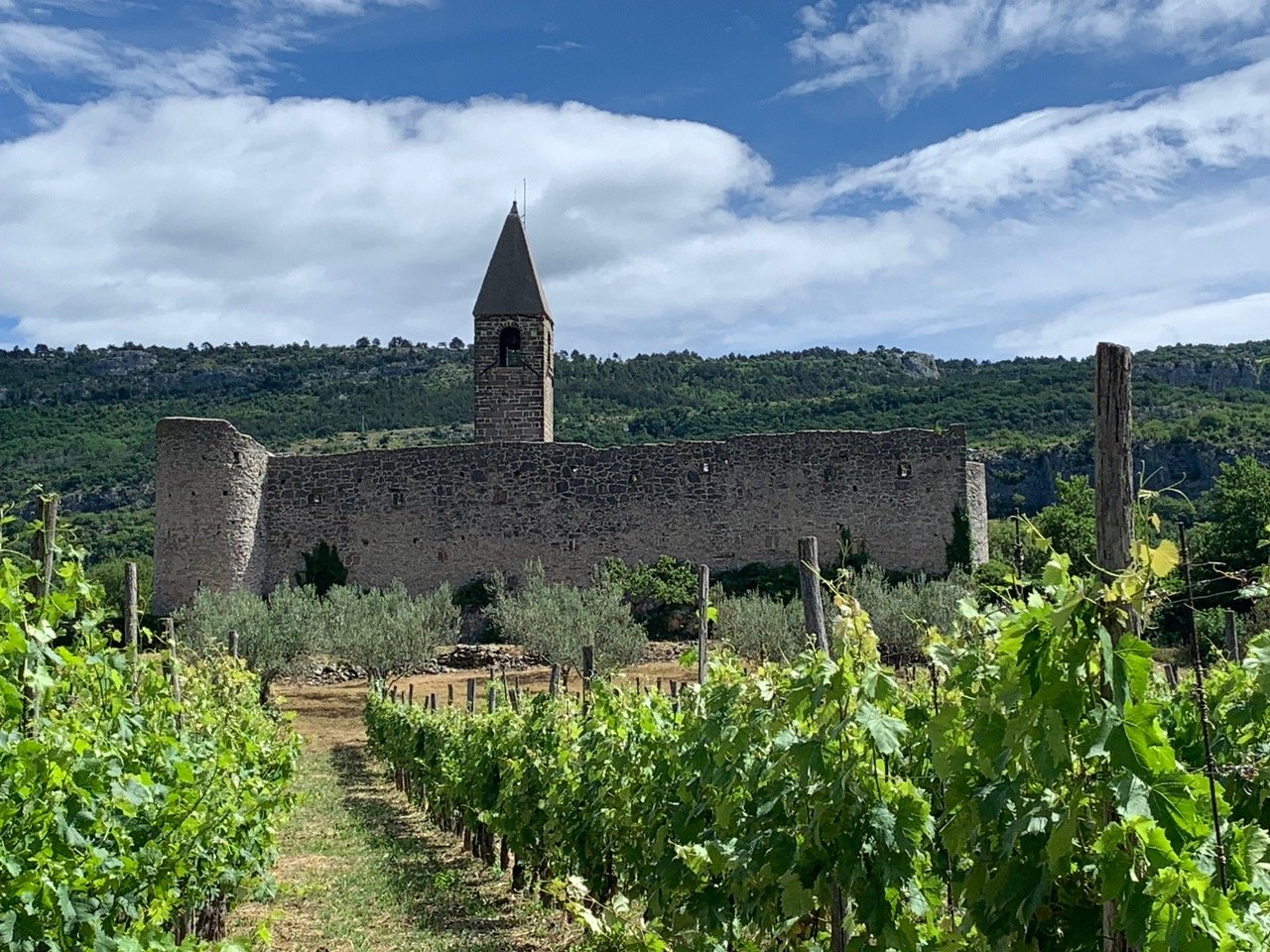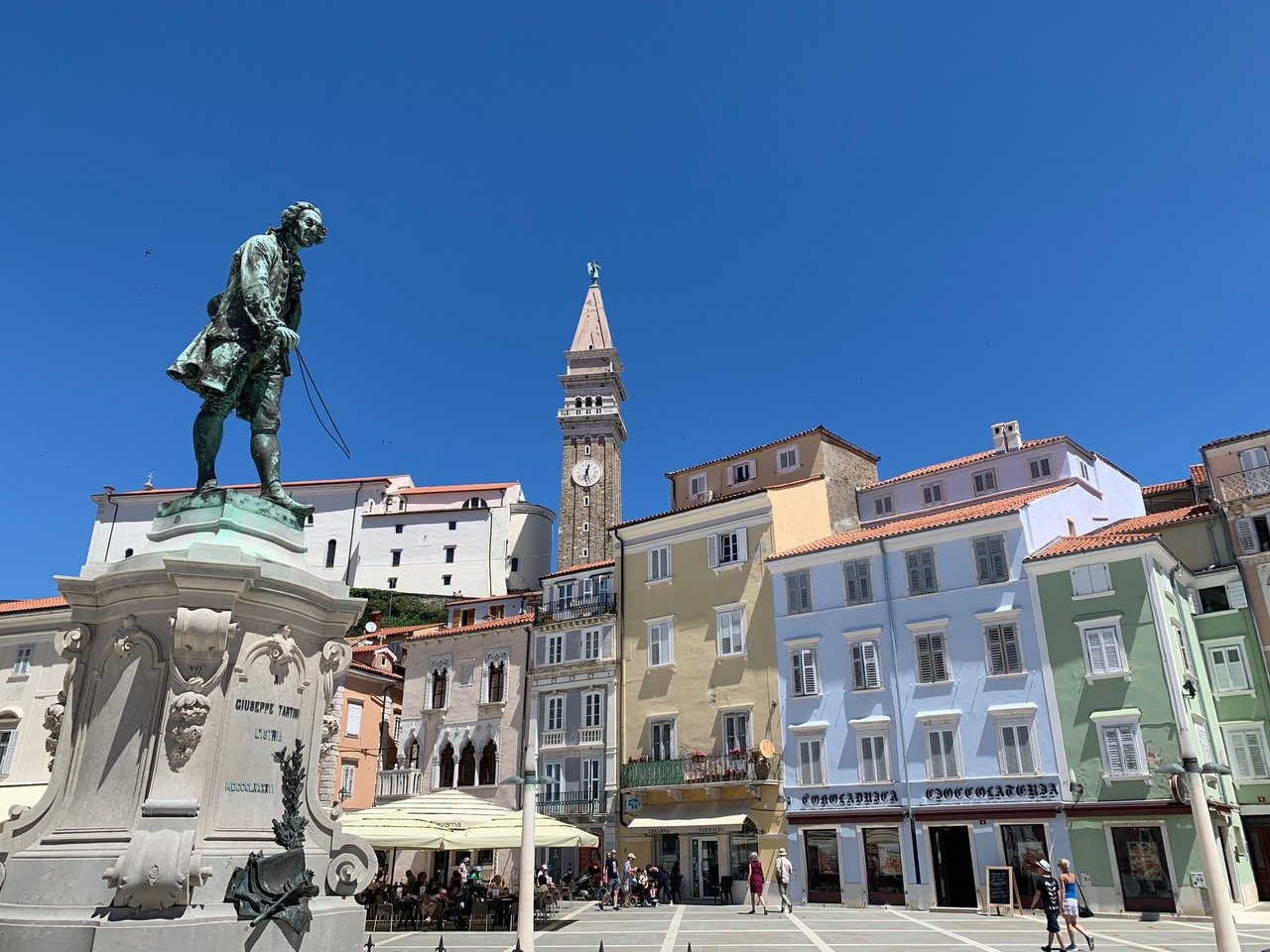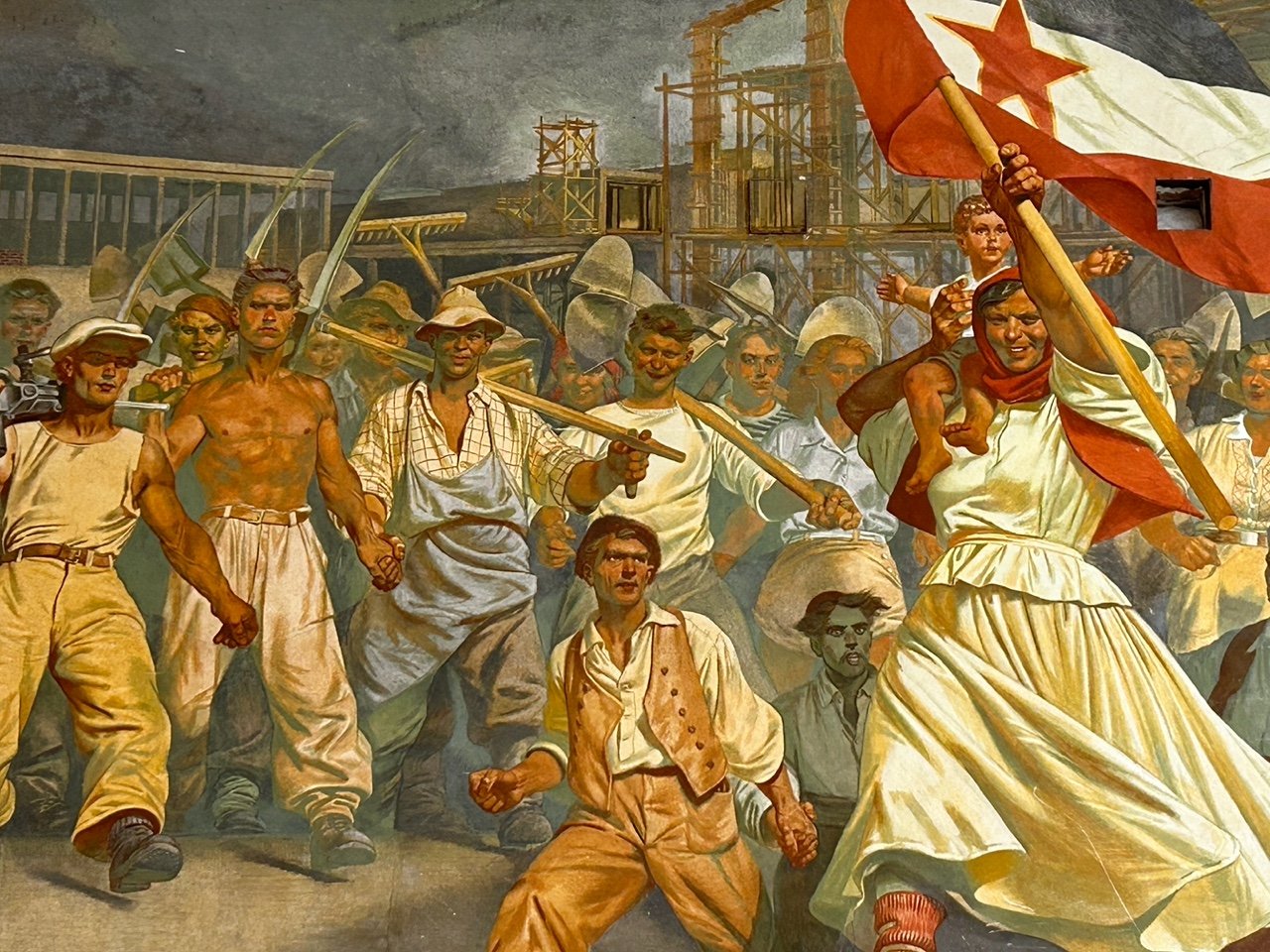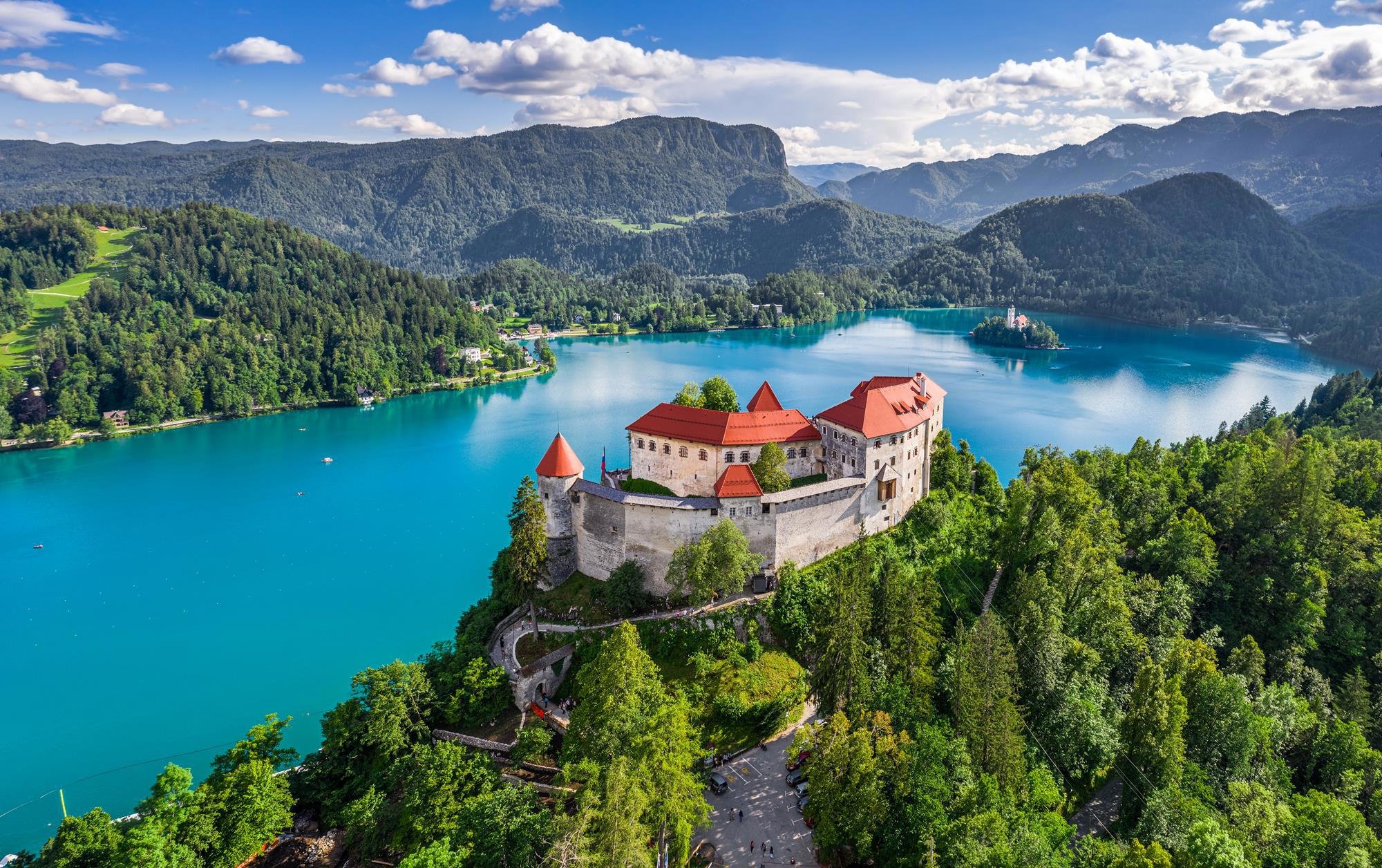A Hidden Europe: Discovering Slovenia
Date - Thursday 14 - Wednesday 20 May 2026
Lecturer - James Hill
Location - Ljubljana, Slovenia
Price - £3675 per person (2 sharing a room)
Slovenia has truly come of age since independence over thirty years ago. Set in the valleys of ancient Pannonia between the Balkans to the south and the Julian and Kamnik Alps to the north, this young, vibrant Mittel European nation might just come as a revelation. Unspoilt alpine, rural and coastal scenery produces superb wine and food, influenced, as you might expect, by its Italian, Austrian, Croatian and Hungarian neighbours. The modernist genius of local architect Jose Plecnik can be seen in Ljubljana, the nation’s capital, where we shall be based for our week. Visits to the ‘Venetian’ coastal town of Piran and magical Lake Bled are but two of the visual delights that await us in mid-May.
-
Discover Slovenia’s unique mixture of unspoilt alpine, rural & coastal scenery
Explore the art & architecture of the capital, Ljubljana
Captivating renaissance & baroque churches & castles
Visit magical Lake Bled
Excellent Slovenian food & wine in some of the country's best restaurants
Comfortable & well located 4* hotel in the heart of the Ljubljana
Since independence over thirty years ago, Slovenia has truly come of age. Slovenia sits at the heart of central Europe, having emerged from the quagmire of Yugoslavia’s collapse. It is a place of unspoilt beauty full of remarkably preserved monuments, economically prosperous and very welcoming to visitors. Settled by Illyrian and Celtic tribes, the emperor Augustus conquered the region, establishing two Roman provinces, Pannonia and Noricum. Roman Emona, now Ljubljana, developed on a river connecting the Balkans to the Danube basin, building up trade as the region flourished. After Rome’s fall, the area was swept up by the Ostrogoths and later contested by both Byzantines and Lombards. Medieval Slovenia saw first the Slavs, then the Franks, establish a vassal state, converting the people to Christianity. Subsequent Bavarian involvement initiated the ‘Germanisation’ of the region, though instability was always close at hand via Avar invasions from Hungary. Throughout the late Medieval and early modern eras, revolts and uprisings awoke a ‘Slovene’ conscience. Further stimulated by the Reformation, this gave Slovenia its first vernacular books, helping it affirm its own language, culture and identity.
As in most of central Europe, when the Habsburgs took control, the area became enmeshed in their wars against the Ottoman Turks. However, under the Empress Maria Theresa reform came, reflected in an unexpected outbreak of artistic patronage. After the fall of Venice in 1797, Venetian-Slovene lands passed to Austria then subsequently administered by Napoleon as the 'Illyrian Provinces'. Suffice to say that after the eventual defeat of Austria-Hungary in 1918, Slovenia was ruled from Belgrade, incorporated within the Kingdom of the Serbs, Croats and Slovenes. After World War II, power was again based in Belgrade, this time under Marshal Tito within the new Socialist Federal Republic of Yugoslavia. Finally, true independence in June 1991 brought a new democratic beginning, which happily continues to flourish into the twenty first century.
We shall stay in the very heart of Slovenia’s capital, Ljubljana, at the 4* Grand Hotel Union, located close to the Ljubljanica River and within walking distance of the principal sites, restaurants, bars and shops.
-
Day 1: Thursday 14 May – We fly from Heathrow, Terminal 3 at 2.35pm to Ljubljana arriving at 5.50 pm on BA794. We travel by coach the short distance to Ljubljana to check-in at our hotel, the 4* Grand Hotel Union. We begin with our first group dinner in one of the city’s best restaurants - wine, water and coffee are included with all group meals.
Day 2: Friday 15 May – We spend our day on foot in Ljubljana. The unique architecture of Jože Plečnik, active between the two world wars, makes him for many the ‘father’ of post-modernism. His playful, eclectic and wittily irreverent designs are visible throughout the city, including his iconic Three Bridges and National University Library. After a coffee break, our morning walk around the handsome old centre concludes with a visit to the National Museum of Slovenia, an excellent chronological introduction to the nation’s history. After a group lunch, we visit the Cathedral of St Nicholas and St George which will be a baroque feast. Afterwards, we end our first day with a river boat trip along the Ljubljanica River. The remainder of the afternoon and evening will be free.
Day 3: Saturday 16 May – Our south-easterly travels take us to the Lower Carniola close to the border with Croatia. Our first visit is to the little border town of Brežice close to the Sava River. We shall visit the sixteenth century Brežice Castle where the regional Posavje Museum contains a good introduction to the Celtic and Roman periods, along with a splendidly frescoed sixteenth century Knight’s Hall. We then travel the very short distance close to the medieval town of Kostanjevica na Krki where we pause for a group lunch. Prettily enclosed by the Kirka River, Kostanjevica’s principle cultural attraction is its former Cistercian monastery which we shall visit in the afternoon. Today, it houses the Bozidar Jakac Gallery; a combination of a minor display of European paintings but principally works dedicated to the Slovene Expressionist painter of the same name and his contemporaries. We return to Ljubljana where the evening will be free.
Day 4: Sunday 17 May – Today, we make our way westwards towards the Slovene Littoral to the hills near the Vipava Vallery to visit the Church of the Holy Trinity at Hrastovlje, Romanesque in design, its fortifications were added ahead of the advancing Turks in 1581. The joy of this small church lies within – its interior was entirely frescoed around 1490. Afterwards, we travel the short distance to the Vipava Valley to discover some of the superb wines and cuisine of western Slovenia. This is one of the most verdant parts of the country with our group lunch hosted in a very renowned Michelin-starred restaurant. After lunch, we return to Ljubljana where the remainder of the day will be free.
Day 5: Monday 18 May – On our way to the Primórska Region, we first pause in the city suburbs to visit Plecnik’s great opus, the Church of St Francis, his last great work. We then drive to the coastal slither that is the south-western corner of Slovenia, just minutes from its borders with Italy and Croatia. Here, we shall visit the coastal town of Piran. Five centuries of Venetian rule have left an indelible mark on this delightful ‘mini-Venice’, perched on a partially walled spur of land. After coffee, our walk through the town will include a visit to the small maritime museum and the panoramic, baroque Cathedral of St George. We will enjoy a group lunch on the seafront before a little free time and our return to Ljubljana where the evening will be free.
Day 6: Tuesday 19 May – Our half day of activities on foot focuses on our second exploration of Ljubljana with a visit to its finest baroque building, the Ursuline Church of the Holy Trinity. We then walk towards Tivoli Park and the National Gallery of Slovenia where the collection brings together art from both local and itinerant artists. The Baroque period is well represented and there are some superb Neo-classical, Romantic and Impressionist works of art, mostly by Slovene artists benefitting from the proximity of Vienna and Munich and their respective Art Schools. Lunch is not included, and the rest of the afternoon will be free. In the early evening, we make our way via funicular to Ljubljana Castle which dominates the old town where we shall enjoy our second group dinner in one of the city’s best restaurants - by chance situated in one of the castle turrets.
Day 7: Wednesday 20 May – On our final day, we travel northwards to Lake Bled in the shadow of the Julian Alps. Only in the nineteenth century did the Habsburgs fully appreciate the beauty of Bled’s scenery and the purity of its waters, transforming the lake into a grand resort. On arrival, we take a pletna gondola across the lake to Bled’s Islet for a coffee break and to visit the Church of the Assumption. Afterwards, we continue to lakeside Villa Bled, one of many properties periodically enjoyed by the Yugoslav royal family and later Marshall Tito. Now a hotel, it contains murals championing Tito’s socialist vision. Like the late Marshall, we too shall take lunch on the villa’s terrace, a fitting finale to our week of explorations. Following our final lunch, we continue to Ljubljana Airport for an early evening return flight to London Heathrow.
-
Price £3675 per person (2 sharing a room) Without Flights £3425pp Deposit £495pp
Single Supplements (please advise your preference)
£695 31m sq Deluxe Double Room sole occupancy - king-sized bed/boulevard view
£495 21m sq Superior Comfort Room sole occupancy -queen-sized bed/internal building view
Hotel 6 nights including breakfast 4* Grand Hotel Union, Ljubljana - Grand Deluxe Room king-sized bed / boulevard view
Flights British Airways
Outward: BA794 Departs London Heathrow (Terminal 3) 1435 arrive Ljubljana 1750
Return: BA795 Departs Ljubljana 1800 arrive London Heathrow (Terminal 3) 1920
Price includes 2 dinners & 5 lunches with wine, water & coffee, all local transfers, City Tax, entry fees & gratuities, services of James Hill and our local guides
Not included Travel to/from Heathrow, 4 dinners & 1 lunch
